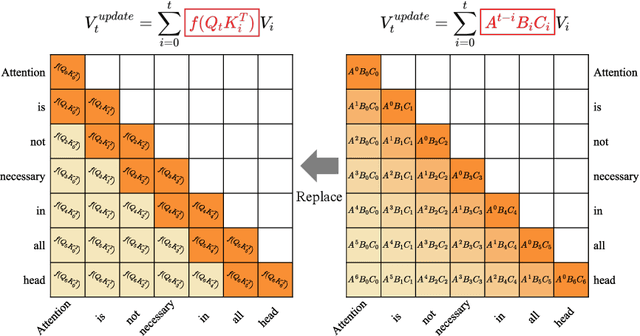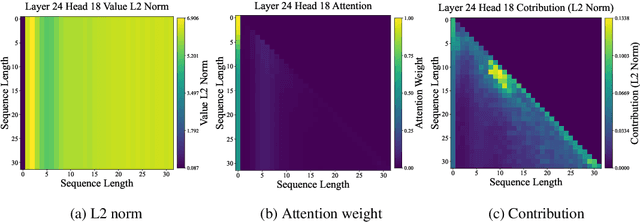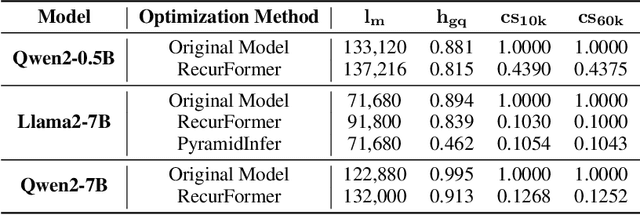Xingbo Du
RecurFormer: Not All Transformer Heads Need Self-Attention
Oct 10, 2024



Abstract:Transformer-based large language models (LLMs) excel in modeling complex language patterns but face significant computational costs during inference, especially with long inputs due to the attention mechanism's memory overhead. We observe that certain attention heads exhibit a distribution where the attention weights concentrate on tokens near the query token, termed as recency aware, which focuses on local and short-range dependencies. Leveraging this insight, we propose RecurFormer, a novel architecture that replaces these attention heads with linear recurrent neural networks (RNNs), specifically the Mamba architecture. This replacement reduces the cache size without evicting tokens, thus maintaining generation quality. RecurFormer retains the ability to model long-range dependencies through the remaining attention heads and allows for reusing pre-trained Transformer-based LLMs weights with continual training. Experiments demonstrate that RecurFormer matches the original model's performance while significantly enhancing inference efficiency. Our approach provides a practical solution to the computational challenges of Transformer-based LLMs inference, making it highly attractive for tasks involving long inputs.
Unveiling and Controlling Anomalous Attention Distribution in Transformers
Jun 26, 2024Abstract:With the advent of large models based on the Transformer architecture, researchers have observed an anomalous phenomenon in the Attention mechanism--there is a very high attention on the first element, which is prevalent across Transformer-based models. It is crucial to understand it for the development of techniques focusing on attention distribution, such as Key-Value (KV) Cache compression and infinite extrapolation; however, the latent cause leaves to be unknown. In this paper, we analyze such a phenomenon from the perspective of waiver phenomenon, which involves reducing the internal values of certain elements in the Softmax function, allowing them to absorb excess attention without affecting their contribution to information. In specific models, due to differences in positional encoding and attention patterns, we have found that the selection of waiver elements by the model can be categorized into two methods: positional-encoding-based and feature-distribution-within-elements-based.
 Add to Chrome
Add to Chrome Add to Firefox
Add to Firefox Add to Edge
Add to Edge